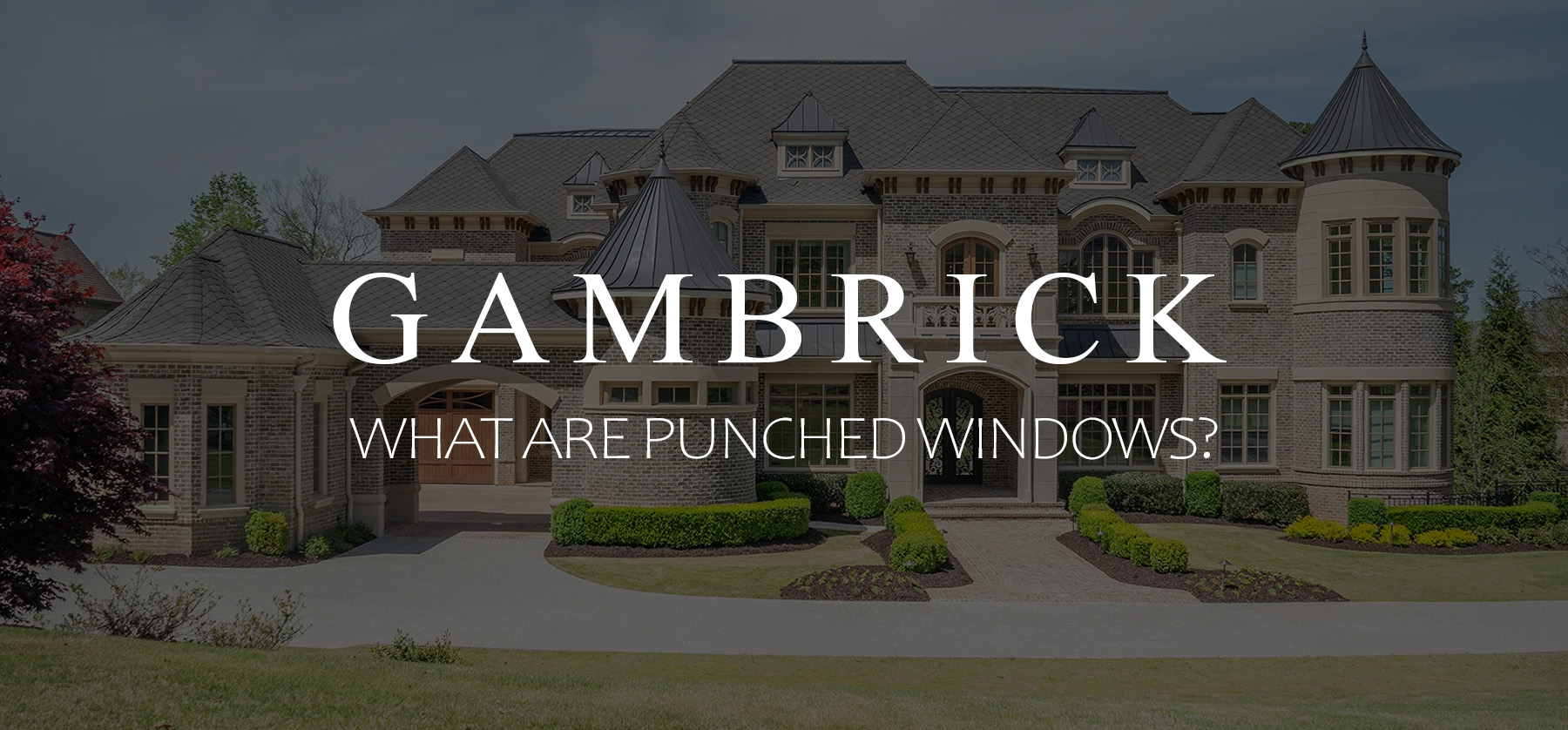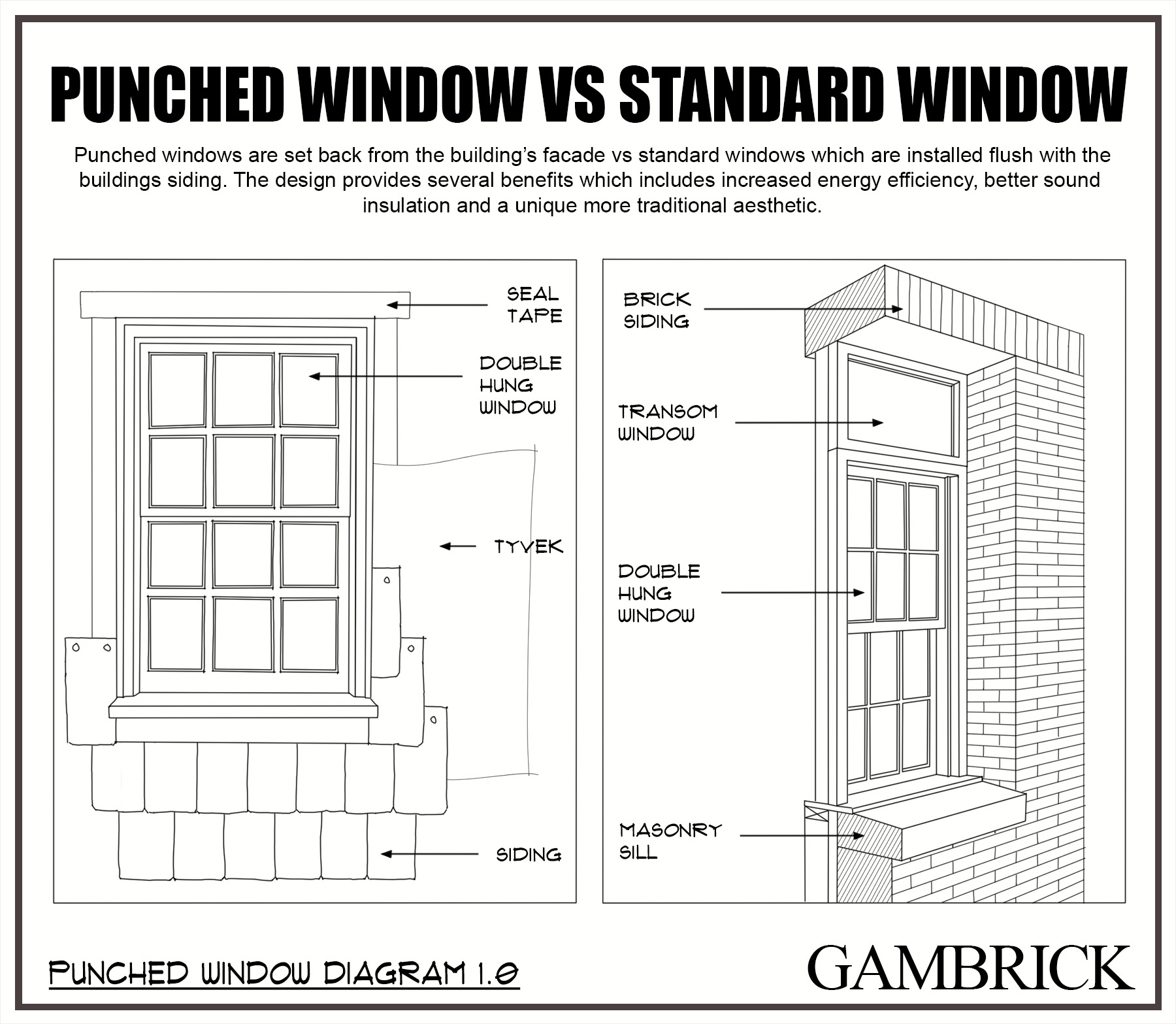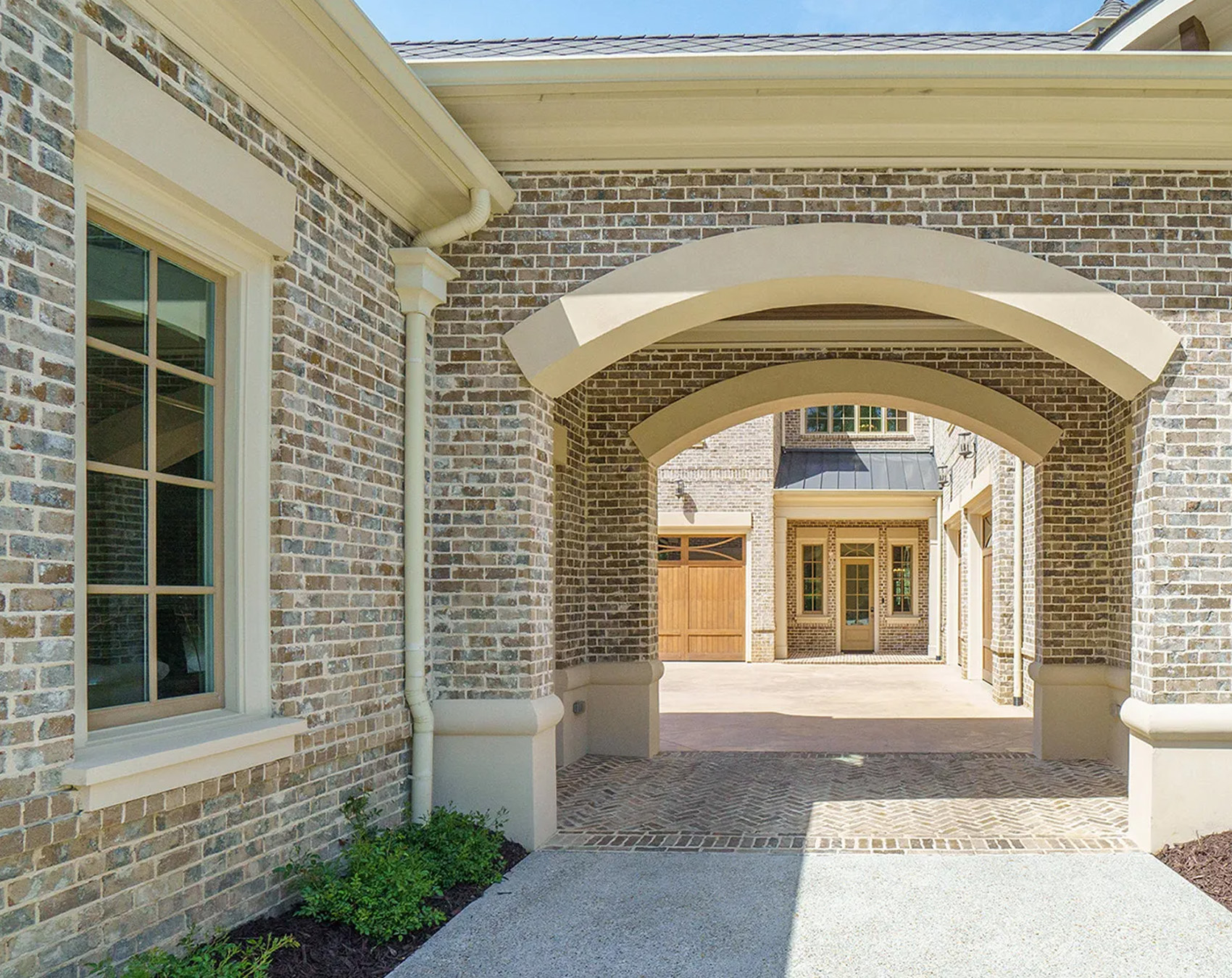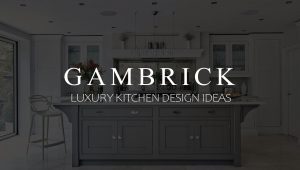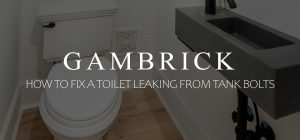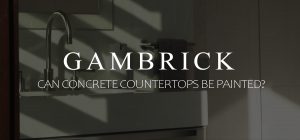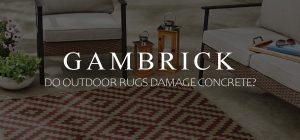What Are Punched Windows?
Standard windows are installed flush with the building’s exterior sheathing. Punched windows are installed about 6 inches inwards from the siding. This positions them deeper than the home’s facade. This gives the window a 3-dimensioanl appearance that looks “punched” into the house. Since the exterior and interior walls around the window extrude past the window’s surface, it gives off a very unique and classic appearance. Once installed, the window is typically surrounded by thick and ornate trim on the outside and possibly the inside of the home. The style is a great way to draw attention to your windows by making them a focal point of your exterior design.
The unique way “punched windows” are installed deep into a home’s frame gives them a few benefits. These include better energy efficiency, more privacy, great looks and better sound insulation. The window itself is no different than any other standard window. However, what makes it “punched” is the way it’s installed deeper into the buildings frame.
A standard window is set flush with the exterior sheathing of the building. However “punched” windows are set back around 6 inches on average. When the trim is later installed, it can give the appearance that they’re set in 12 inches or more.
As natural light, ventilation, and energy efficiency become increasingly important in building design, punched windows offer a unique solution that can meet these needs while also adding an aesthetic value to a structure.
What Is A Punched Window
A punched windows is typically rectangular or square in shape and is set deep into a building’s facade rather than flush with the siding. They’re defined by their 3-dimensional and regal appearance and are typically surrounded by thick trim. However round or oval shapes can also be used in a punched style.
The design can be found in a range of building styles, from traditional to contemporary, and are often used in commercial, industrial, and residential structures.
- Punched windows are made from a variety of materials, including wood, aluminum, steel, and vinyl.
- They’re available in a range of sizes, from small, single-pane windows to larger, multi-pane configurations.
- The style is different from picture windows because they can be opened for ventilation and offer better energy efficiency due to their smaller size.
- The windows can be made from a range of materials and can be customized to suit the needs of any building project.
- Punched windows are no different that standard double-hung, casement or awnings windows. What makes them “punched” is the way they’re installed.
A punched window offers a classic yet modern look to a building’s facade while also providing functional benefits. Whether you’re looking to improve natural light, ventilation, or energy efficiency, punched windows are a great option to consider.
How To Install A Punched Window
Punched style windows are no different from standard windows. What defines the style is that the area where the window is installed is set back into the house frame. This gives it a “punched” in appearance. In most cases, the area where the window is installed is set in about 6 inches from the home’s siding.
Because punched windows are set deeper into the house frame, it helps to have thick exterior walls. It’s much harder to create the style with 4 or 6 inch thick exterior walls vs 10-12 inch. But you can still do it if you pad the outside of the window a bit and install thick trim. The idea of the style is to give the appearance of depth rather than installing the windows flush with the siding.
- To install a punched window, you must first frame a rectangular or square area of wall that’s set in about 6 inches deeper than the surrounding sheathing. This framed in area essentially becomes a frame for the window.
- Using punched style windows gives a building depth.
- Once the window is installed, the area around the window is typically trimmed which adds even more depth and visual interest to the windows.
The resulting window is set apart from other windows on the building’s facade, with exterior and interior wall surfaces extruding farther out past its surface.
Punched windows can be installed in various arrangements, giving architects and designers the freedom to create idiosyncratic designs that don’t necessarily conform to traditional rectangular shapes or parallel orientations.
In addition to their aesthetic appeal, punched windows provide benefits such as increased energy efficiency, better soundproofing and more privacy.
Punched Windows Vs. Other Window Types
When it comes to window types, there are a variety of options to choose from, each with its own benefits and drawbacks. Here, we’ll compare punched windows with other common window types to help you determine which is the best choice for your project.
- Punched Windows vs. Picture Windows: Picture windows offer unobstructed views and increased natural light. However, they’re fixed and cannot be opened for ventilation. Punched windows can be just as large as picture windows, but they offer the added benefit of improved energy efficiency and can be opened for ventilation. This makes them a better choice for buildings where energy conservation is a priority.
- Punched Windows vs. Awning Windows: Awning windows are hinged at the top and open outward, allowing for ventilation while keeping out rain and debris. But punched windows usually have a larger glass surface which provides more natural light and opens wider for more ventilation. This makes them more cost-effective vs awning windows due to their simpler design.
- Punched Windows vs. Casement Windows: Casement windows are hinged at the side and open outward, providing similar ventilation benefits to awning windows. However, punched windows are usually double hung which is a cheaper design. Additionally, a double hung window is sleeker, and easier to operate when it’s set into the building’s facade.
The choice between punched windows and other window styles will depend on the design of your project. However, punched windows offer a unique combination of benefits that makes them a compelling option to consider.
Punched Windows Vs Other Commercial Window Designs
Punched windows are a popular choice for many small to medium sized commercial buildings. But there are a variety of other window styles to consider which may or may not be installed in a punched design.
Here are some of the most commonly used commercial window types:
- Fixed: These windows are designed to remain in place and do not open or close. They’re commonly used in areas where ventilation is not a concern, such as high-rise buildings.
- Curtain: Curtain windows are made up of individual glass panes that are held in place by a single frame. This creates a continuous “curtain” of glass. They provide a sleek, modern look and can be customized into a variety of sizes and shapes.
- Ribbon: Ribbon windows are similar to curtains in that they’re made up of individual glass panes held in place by a frame. However, the panes are arranged horizontally, creating a “ribbon” effect.
- Metal: Metal windows are durable and strong, making them a good choice for buildings that require extra security.
- Sliding: Sliding windows are designed to slide open horizontally, providing a larger opening than traditional punched windows. They’re a good choice when ventilation is a priority.
- Double-Hung: Double-hung windows are designed to slide open vertically, providing a classic look that works well with many building styles.
Pivot: Pivot windows are unique in that they rotate around a central pivot point, allowing for a wide range of movement and increased ventilation.
Punched style windows offer a unique set of benefits that can be combined with many style windows such as casement, sliding or pivot to create a more customized look. Ultimately, the choice of window type should be based on the specific needs and goals of the project.
Tips For Designing A Punched Window
When designing a home with punched windows, it’s important to consider things like the overall style of the home, energy efficiency, ventilation and how you’ll be trimming the window on the inside and out. Punched windows will become a focal point of the home so use them carefully.
Here are several important considerations to keep in mind:
- Orientation: The orientation of the home and the placement of your windows can have a significant impact on the amount of natural light that enters the space. By strategically placing windows, designers can maximize natural light while increasing energy efficiency.
- Materials: The materials used for the window frames and glass can impact the performance of your windows. Choosing high-performance glass and insulated frames can improve energy efficiency and reduce heating and cooling costs.
- Style: Punched windows work well with a variety of building styles, but they’re particularly well-suited to more traditional designs. Consider the overall style and aesthetic of the home to ensure the windows complement the design.
- Functionality: Punched windows can serve a variety of functions beyond simply providing natural light. They can be used to create visual interest, provide ventilation, or offer views of the surrounding environment. When designing a home, consider how the windows will be used and what functions they’ll serve.
- Customization: One of the key benefits of punched windows is their design flexibility. They can be customized in a variety of sizes, shapes, and configurations to suit the specific needs of each project. This allows designers to create truly unique and visually striking facades.
- Trim: Have a plan for how you’ll be trimming the window inside and out.
By taking these design considerations into account, architects and designers can create beautiful, functional, and energy-efficient homes that make the most out of punched windows.
The Benefits Of Punched Windows
Punched windows provide a number of benefits which include increased energy efficiency, more sound insulation and great looks. If you incorporate the style on the right house design, they can really set your house apart fro the neighbors. However it’s not a universal look that should be used on every home. I prefer it on traditional style homes that use thick trim, stone, stucco and brick rather than wood siding.
Ahead, we’ll discuss some of the benefits to used punched style windows on your home or building:
1. Higher Energy Efficiency
A punched window provide increased energy efficiency vs a window that’s installed flush with the siding. By setting the window back, you create more protection against drafts on cold days while providing some shade on hot one. They also help increase the mass of insulation between the building’s exterior and interior, which help maintain the building’s internal temperature.
Increased energy efficiency results in lower spending on central heating and cooling costs. Additionally, their separated design enables selective window placement in key areas where you get the most wind or sun. Punched windows stand out from the rest so you can use them sparingly in key areas that benefit the most from energy efficiency.
2. Enhanced Privacy
Privacy is a significant concern for many homeowners and building tenants. Punched windows allow designers to create genuinely private rooms by incorporating glass at angles or implementing vision control treatments. This feature lets people see out of a room while preventing outsiders from looking in.
Besides privacy enhancements, you also gain greater access control, which is particularly useful in high-security government buildings, prisons and high-end homes.
3. Affordability
Compared to other window designs, punched windows are often less expensive. For example, ribbon-style or curtain-style windows require more glass to fill all the spaces, resulting in higher expenses. In contrast, punched windows let you limit window space to the regions you need it most, cutting out the expense of glass you don’t want.
However, the cost-efficacy of these windows depends on your frame choices, as expensive frames can still put you over budget. Trim is another consideration. If you use thick and ornate trim on the inside and outside of the homes, you could end up spending more than you would have for a traditional style window.
4. Compatibility With Many Frame Options
Punched windows are compatible with many frame options. This makes them an excellent choice for those who want to experiment with their window frame’s shape, materials, and color. Whether you prefer a fun, quirky aesthetic or a zen-like symmetry, you’ll have plenty of options to choose from.
5. Customization
Punched window designs offer significant customization for glass, materials, and openings. For instance, high-security quarters may require bulletproof glass, while that expense is unnecessary in other regions. The unique set in design make it easy to manipulate the angle or position of bulletproof glass to disguise it. This cultivates a seamless visual sensibility among bulletproof and typical windows.
Additionally, punched designs offer opportunities for UV-treated or frosted glass in specific locations without sacrificing visual uniformity. The windows’ hinges can also be optimized differently in various locations, maintaining a consistent appearance across the building.
6. Viewpoint Choices
Punched windows work with a wide range of architectural aesthetics, allowing designers to choose a viewpoint that fits their vision. Whether it’s a sleek glass design for large commercial buildings or a layered approach for smaller properties, the style is quite versatile.
7. Improved Acoustic Insulation
One of the benefits of punched windows is that they can provide improved acoustic insulation compared to other window types. The insulation is achieved through a combination of the window’s design and the materials used.
- In terms of design, the fact that each window is separated from the others means that sound waves have a harder time traveling through the building. The air gaps between the windows act as a buffer, reducing the amount of noise that can pass through.
- Designers can choose to use thicker glass which can also help reduce noise levels. Thicker glass has a higher mass, which means it can absorb more sound energy than thinner glass.
- The use of laminated glass can also help reduce noise levels. Laminated glass consists of two or more layers of glass with a layer of polyvinyl butyral (PVB) sandwiched in between. The PVB layer acts as a sound barrier, helping to reduce the amount of noise that can pass through the glass.
- Designers can also use acoustic insulation materials in the window frames to further reduce noise levels. Materials like mineral wool or acoustic foam can be used to fill the gaps between the frame and the wall. This helps prevent sound from leaking in or out.
The improved acoustic insulation offered by punched windows can help create a more comfortable and productive environment. This is especially beneficial in noisy urban areas or near transportation hubs.
Punched Windows Vs Curtain Walls
Punched windows and curtain walls are two popular options for building facades. But they have distinct differences that set them apart. As a builder with over 25 years experience, I can tell you that understanding the pros and cons of each option is crucial to selecting the best choice for your project.
Punched windows are individual windows set into a building’s exterior with individual frames separating each unit. Curtain walls, on the other hand, are floor-to-ceiling glass panels held in place by a frame that covers the entire building facade.
- A big advantage of punched windows is their versatility in terms of design and functionality. Designers can create unique patterns and configurations to suit the look of the building. They also offer more privacy and acoustic insulation than curtain walls, as each individual window is set back which can absorbs some sound waves.
- Curtain walls offer a more seamless and modern look. This makes them ideal for large commercial buildings with huge expanses of glass. Curtain walls also allow for more natural light to enter a building, which can improve the indoor environment and energy efficiency. However they can’t be opened or customized in the same way punched windows can.
Another important factor to consider is the cost. Punched windows are generally more affordable than curtain walls, as they require less glass and fewer materials overall. However, they can sometimes cost more depending on how you trim the inside and outside of the windows.
Ultimately, the decision depends on the building’s design. For buildings that require greater privacy and a unique look, punched windows may be the better choice. But for larger commercial buildings with expansive glass facades and a desire for a more modern, seamless look, curtain walls may be the way to go.
Summary: What Are Punched Windows?
Standard windows are installed flush with the building’s exterior sheathing. Punched windows are installed about 6 inches inwards from the siding. This positions them deeper than the home’s facade. This gives the window a 3-dimensioanl appearance that looks “punched” into the house. Since the exterior and interior walls around the window extrude past the window’s surface, it gives off a very unique and classic appearance. Once installed, the window is typically surrounded by thick and ornate trim on the outside and possibly the inside of the home. The style is a great way to draw attention to your windows by making them a focal point of your exterior design.
The unique way “punched windows” are installed deep into a home’s frame gives them a few benefits. These include better energy efficiency, more privacy, great looks and better sound insulation. The window itself is no different than any other standard window. However, what makes it “punched” is the way it’s installed deeper into the buildings frame.
A standard window is set flush with the exterior sheathing of the building. However “punched” windows are set back around 6 inches on average. When the trim is later installed, it can give the appearance that they’re set in 12 inches or more.
As natural light, ventilation, and energy efficiency become increasingly important in building design, punched windows offer a unique solution that can meet these needs while also adding an aesthetic value to a structure.
If you have any questions or comments about the benefit of installing a punched window, email any time.
